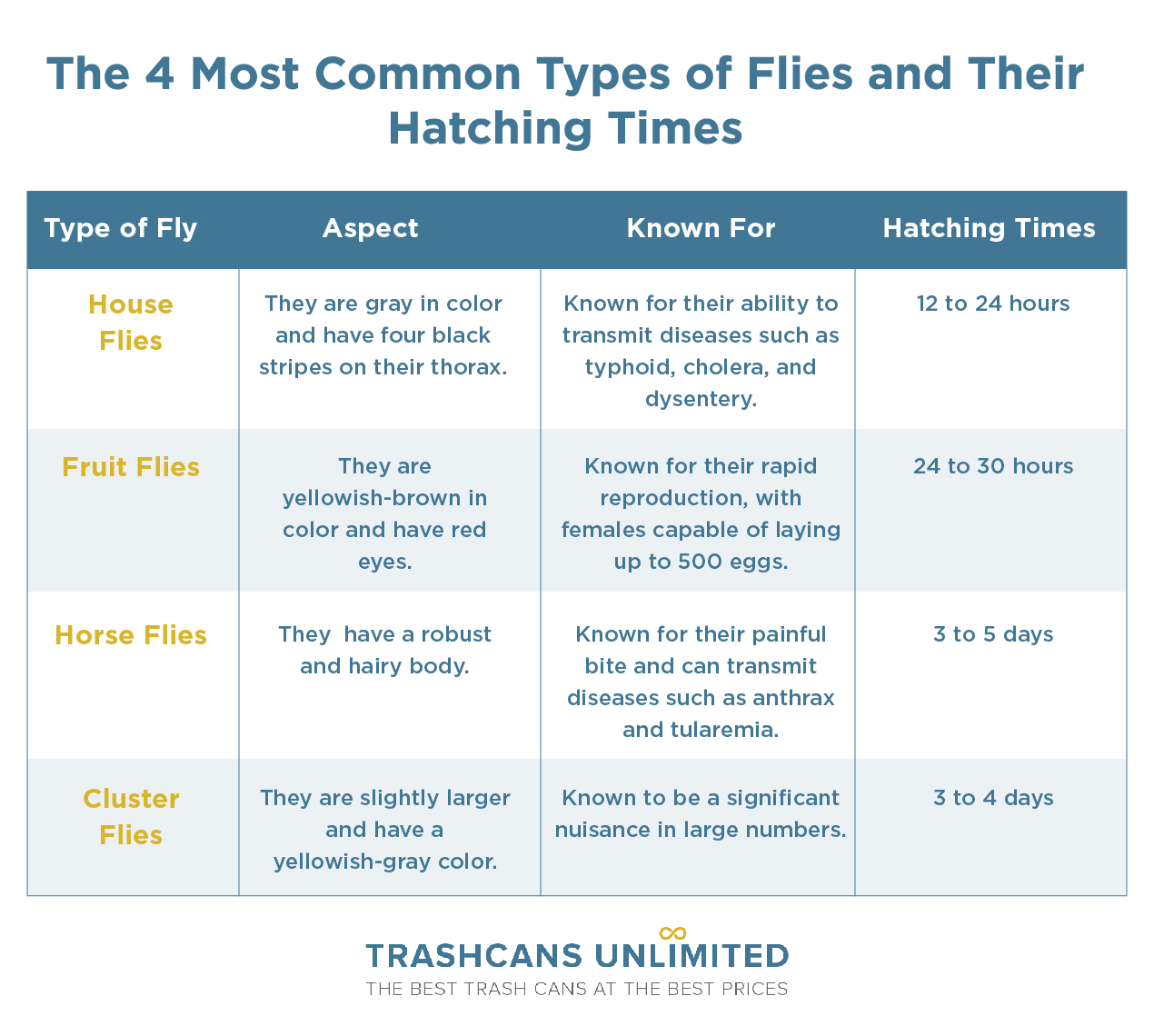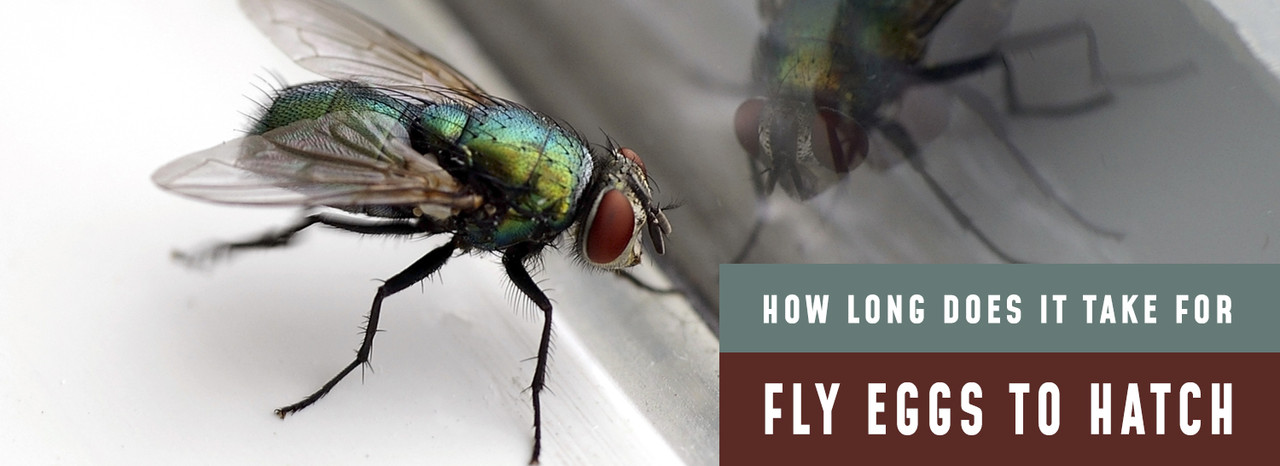If you're dealing with a fly infestation or are simply curious about the fly life cycle, understanding how long it takes for fly eggs to hatch is essential. This process can vary depending on various factors, including the type of fly, temperature, and humidity levels, among others.
In this article, we will explore the stages of the fly life cycle, factors affecting fly egg hatching time, common types of flies and their hatching times, and signs of a fly infestation. So let’s get into it!
The 4 Stages of the Fly’s Life Cycle
Before we delve into the details of fly egg hatching, it is important to understand the different stages of the fly's life cycle. Here are the 4 stages of a fly’s life cycle:
1. Egg Stage
The first stage of the fly life cycle is the egg stage, which typically lasts anywhere from a few hours to a few days!
A female fly can lay up to 500 eggs during her lifetime, which are typically deposited in moist organic material. For example, the common housefly prefers to lay its eggs in animal feces, while the fruit fly prefers to lay its eggs in rotting fruits and vegetables.
This preference is thought to be due to the specific nutrients and moisture content of the organic material, which are necessary for the survival of the fly larvae.
2. Larval Stage
Once the eggs hatch, the larvae emerge, which are commonly referred to as maggots. This stage can last anywhere from 3 to 14 days, depending on the type of fly and environmental conditions. There are a few factors that affect the egg hatching time:
Temperature and Humidity
Warmer temperatures and higher humidity levels accelerate the fly life cycle, while colder temperatures and lower humidity levels slow it down. For example, in the summer months fly eggs can hatch in as little as eight hours. However, during the winter months the hatching time can take up to three days.
Availability of Food
If there is an adequate food source, fly larvae can grow and develop faster, resulting in a shorter hatching time. On the other hand, if food is scarce, the hatching time may be longer.
Flies that lay their eggs in garbage cans or on animal waste can hatch in as little as 24 hours. However, if the eggs are laid in an area with limited food sources the hatching time can take up to five days.
Presence of Predators
Flies have a wide range of natural predators, including birds, spiders, and other insects. The presence of these predators can impact the hatching time of fly eggs, causing the larvae to hatch sooner to avoid detection.
By understanding these factors, it is possible to predict when fly eggs will hatch and take appropriate measures to prevent infestations.
Fun Fact: In forensic science, the presence of fly larvae on a corpse can be used to estimate the time of death, as the length of the larval stage is dependent on the environmental conditions.
3. Pupal Stage
The pupal stage is a non-feeding stage during which the larvae transform into adult flies. This stage usually lasts for a few days but can extend for up to several weeks, depending on the environmental conditions.
During the pupal stage, the fly undergoes metamorphosis, transforming from a maggot-like larva into an adult fly with wings and legs which is facilitated by the release of hormones. This transformation will take them to the final stage.
4. Adult Stage
During the adult stage, the fully formed fly emerges from the pupa. The adult fly's lifespan can vary depending on the species, but most flies live for a few weeks to a month.
Flies play an important role in various ecosystems, as they are important pollinators and decomposers. However, they can also be pests and vectors of disease, as they are able to transmit pathogens from one organism to another.
Therefore, it is important to understand the fly life cycle and take measures to control fly populations when necessary. Now let’s get into the most common types of flies and their hatching times.
The 4 Most Common Types of Flies and Their Hatching Times
Flies are not only a nuisance but also pose a significant threat to our health. There are many types of flies, each with its own unique lifecycle and hatching time. So here are some common types of flies and their hatching times in further detail:

In conclusion, flies are a common pest that we encounter in our daily lives. Understanding their lifecycle and hatching times can help us take appropriate measures to control their populations and prevent the spread of diseases they may carry.
The 3 Signs of a Fly Infestation
If you suspect you have a fly infestation, there are several signs to look out for. These include:
1. Visible Fly Eggs or Larvae
If you notice small, white, or yellowish eggs or tiny white maggots in your home or yard, you likely have a fly infestation. These eggs and larvae can often be found in moist areas, such as in rotting food, animal feces, or garbage.
Flies lay their eggs in these areas, as they provide the ideal environment for the larvae to develop and grow. If left unchecked, the larvae will eventually pupate and emerge as adult flies, perpetuating the infestation.
2. Increased Number of Adult Flies
If you see more flies than usual in and around your home or business, this could indicate a fly infestation. Adult flies are attracted to food and moisture and are often found in areas where these resources are abundant.
3. Unpleasant Odors
As fly larvae feed and develop, they produce organic waste, which can emit strong, unpleasant odors that are often the first sign of a fly infestation. These odors can be particularly strong in areas where there is a large concentration of larvae, such as in garbage cans or compost piles.
The 3 Factors that Contribute to Fly Infestations
In addition to these signs, there are several other factors that can contribute to a fly infestation. Here are a few things that flies are attracted to so you can prevent an infestation.
- Direct sunlight or where there is heat escaping from a building.
- Certain types of food, such as sugary or fermented substances.
- Animal feces and decaying organic matter.
Knowing this can help you prevent fly infestations. And if you’re wondering how you can do this, let’s get into the 3 prevention techniques to avoid fly infestations.
3 Prevention Techniques to Avoid Fly Infestations
To prevent a fly infestation, it is important to eliminate potential breeding sites and food sources. This may involve:
- Cleaning up garbage and compost piles
- Repairing leaky pipes
- Sealing cracks and gaps in windows and doors.
In some cases, it may be necessary to use insecticides or other pest control methods to eradicate the infestation. By understanding the fly life cycle, the different types of flies, and the signs of a fly infestation, you can better control and prevent infestations in and around your home or business.

